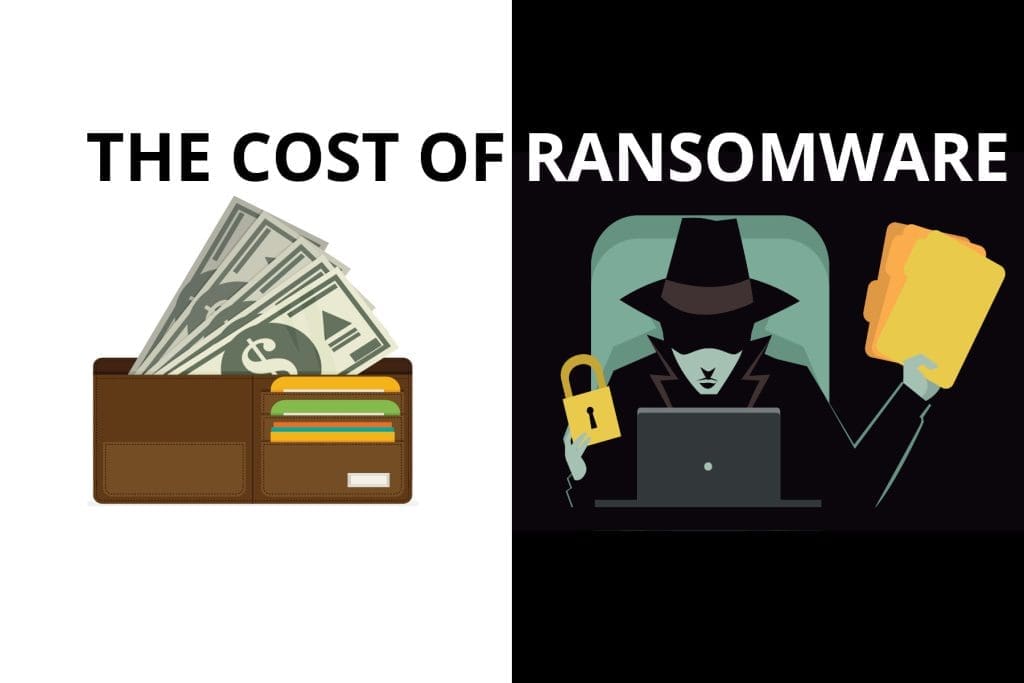

Imagine coming into work, firing up your computer, and instead of your usual start screen, you’re greeted with a message demanding payment to unlock your files. That’s ransomware—a type of malware that locks you out of your own data and demands a ransom for its return. But the costs of this type of cyberattack not only demands a ransom but can also lead to staggering indirect costs. Let’s learn more about the cost of ransomware attacks on small to mid-sized businesses.
Immediate Financial Impact: The most obvious hit comes from the ransom itself. The ransom payment can vary widely, but for many small to mid-sized businesses, the cost typically ranges from $5,000 to $50,000. Larger businesses or more severe attacks might demand ransoms well into the hundreds of thousands or even millions. But paying the ransom doesn’t guarantee you’ll get your data back, and it might just make you a target for future attacks.
Operational Downtime: While your systems are locked, your business isn’t running. This downtime can mean lost revenue, and for some businesses, a few hours of inactivity can translate to substantial financial losses, often exceeding the ransom itself. On average, the cost of downtime due to ransomware is about 50 times higher than the ransom requested. For a small to mid-sized business, this could mean anywhere from $120,000 to $300,000 in lost revenue, depending on the duration of the downtime and the nature of the business.
Remediation Costs: Cleaning up after a ransomware attack isn’t as simple as just paying the ransom. You’ll need IT experts to restore data and systems, sometimes replace hardware and/or software, beef up security measures, and get everything back online, which adds up quickly. These costs can range from $10,000 to over $100,000. In more severe cases, particularly if data restoration is complex or if there is significant infrastructure damage, costs can escalate significantly.
Regulatory Fines: Depending on your industry, failing to protect sensitive information can lead to hefty fines from regulatory bodies. If the data breach involves sensitive information and violates privacy laws (like HIPAA in healthcare or GDPR for European data subjects), fines can range from $5,000 to millions of dollars, depending on the severity of the breach and the regulatory framework.
Legal Expenses: Legal costs can arise from the need to consult with cybersecurity law experts to navigate data breach laws and to defend against potential lawsuits. For small to mid-sized businesses, legal fees can range from $5,000 to $50,000, depending on the complexity of the legal issues and the duration of legal counsel.
Insurance Costs: Cybersecurity insurance can help mitigate the costs of a ransomware attack, but premiums can be substantial and vary based on the risk profile and the coverage limits of the business. For small to mid-sized businesses, annual premiums can range from $1,000 to $15,000, often with deductibles that can also range from $10,000 to $50,000 per incident.
Reputational Damage: This cost is harder to quantify directly in dollars but can be the most devastating. Loss of customer trust can lead to decreased business volumes, which might reflect an indirect cost running into tens or even hundreds of thousands of dollars over time.
Repeated Attacks: Businesses that have been attacked once are at a higher risk of subsequent attacks, often because initial vulnerabilities may not have been fully addressed or because the business is seen as a willing payer. The cost of repeat attacks can be higher due to increased downtime and potentially larger ransoms. Financially, repeat attacks can increase remediation and operational downtime costs by 30-50%, potentially adding hundreds of thousands to the total cost.
Studies show that the cost of a ransomware attack, including downtime, lost business, and remediation efforts, can exceed $2 million for small to mid-sized businesses. The good news? Ransomware isn’t a foregone conclusion. With proactive cybersecurity measures, regular backups, and a solid response plan, you can significantly reduce your risk and potential costs. Get help.
